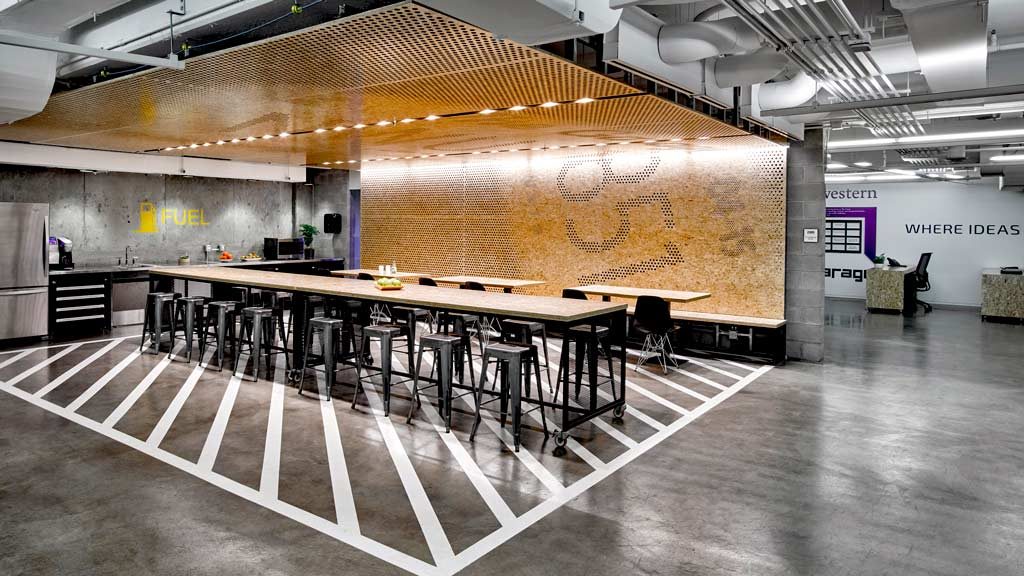A new report by the Ryerson Urban Analytics Institute is encouraging the City of Toronto and other urban municipalities to rethink parking standards for new buildings.
The research study prepared for the Residential and Civil Construction Alliance of Ontario (RCCAO) is entitled How Parking Regulations Need to Evolve for High-Rise Buildings. One of the key recommendations was for the city to examine above-ground parking options when constructing new buildings so structures can be repurposed.
“If the parking in the highrise buildings to be constructed now and in the future continues to be in the underground, there is no chance to repurpose that underground parking if and when that space becomes redundant,” explained Murtaza Haider of the Ryerson Urban Analytics Institute. “If we entertain the idea of providing parking above grade that is on higher levels and then we design it in a way that it can be repurposed…that space could be used for residences, offices and other uses.”
Design considerations include higher ceilings, flatter floors and placement of staircases, columns and elevator shafts that are conducive to future reuse.
Building an underground parking spot is anywhere between $50,000 to $100,000,
— Murtaza Haider
Ryerson Urban Analytics Institute
Highrise buildings sometimes require the construction of up to six levels of underground parking and there are parts of the city where the groundwater level is not too far below surface levels, explained Andy Manahan, executive director of the RCCAO, in an email to the Daily Commercial News.
“During heavy storms, there is a lot of surface runoff and the city’s underground pipe infrastructure can be overwhelmed and the combined sewage system is impacted,” said Manahan, adding a long-term solution would be to upgrade the city’s aging infrastructure.
“A practical solution in the short-term, as presented in the report, is to build future parking above-ground option as this would take pressure off when there are storm events.”
It also costs more money to construct underground.
“In our conversations with builders we found out that the cost of building an underground parking spot is anywhere between $50,000 to $100,000,” said Haider. “If you were to reduce the number of parking spots or provide them above grade then you can have cheaper homes built and you can transfer those savings to the buyers and that is improving housing affordability. It’s a win-win.”
The report also recommends the City of Toronto undertake a review and overhaul of minimum parking standards, which have not been reviewed meaningfully since 1986, in order to bring them in line with the expected changes in travel behaviour, technology and services.
“The city may want to undertake a fresh review of its parking standards in light of the technological changes that are heading our way,” said Haider.
“Essentially, we are saying to the city that it may be a good time for them to think critically of the parking standards… The expected lack of parking demand in the future requires us to rethink our minimum parking standard, the requirement to provide parking below grade, the future of parking and how we will commute.”
Haider said minimum parking standards are based on the assumption that people in the future will be owning cars the way they do now, but car ownership is expected to decline.
“Every municipality that regulates parking standards has to be mindful that they do not end up requiring high rise buildings to over supply parking because 10, 20 years later they realize there is nothing that can be done with three floors of underground parking,” said Haider.
In addition to ride hailing and car sharing which is growing in popularity, a big change in the future will be autonomous vehicles, which will also introduce significant changes in behaviour, Haider explained.
“Just like taxi cabs, the autonomous vehicles will spend a much greater time travelling than being parked which means that there will be less of a requirement for parking,” said Haider. “The demand for parking in highly desirable areas will decline because the vehicles can park themselves in cheaper places.”
Manahan said the RCCAO is working to get the report out to City of Toronto staff and council.










Recent Comments
comments for this post are closed